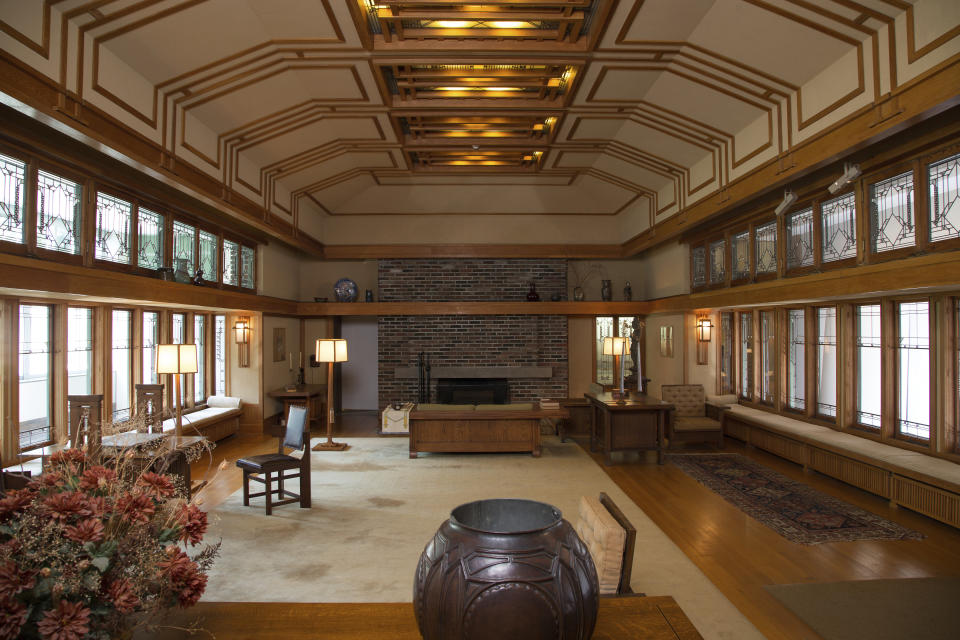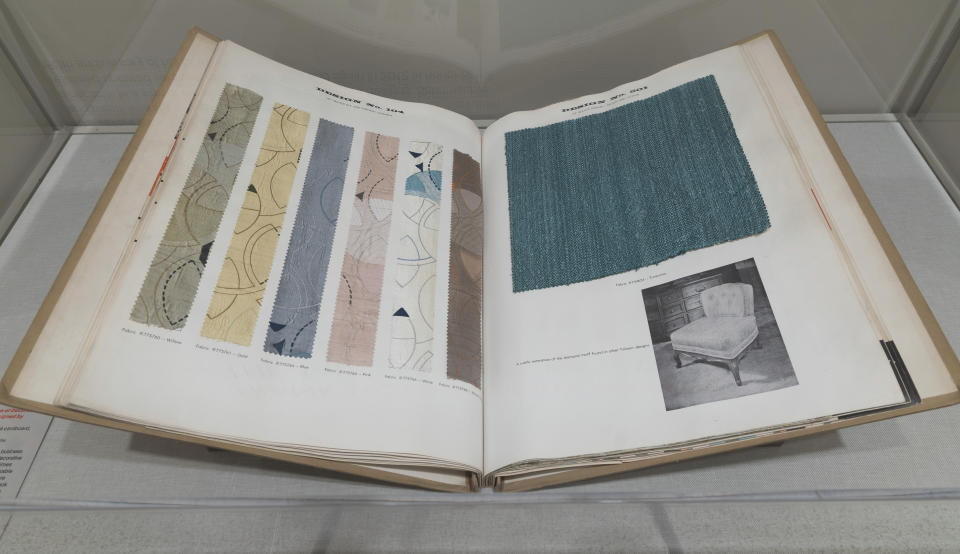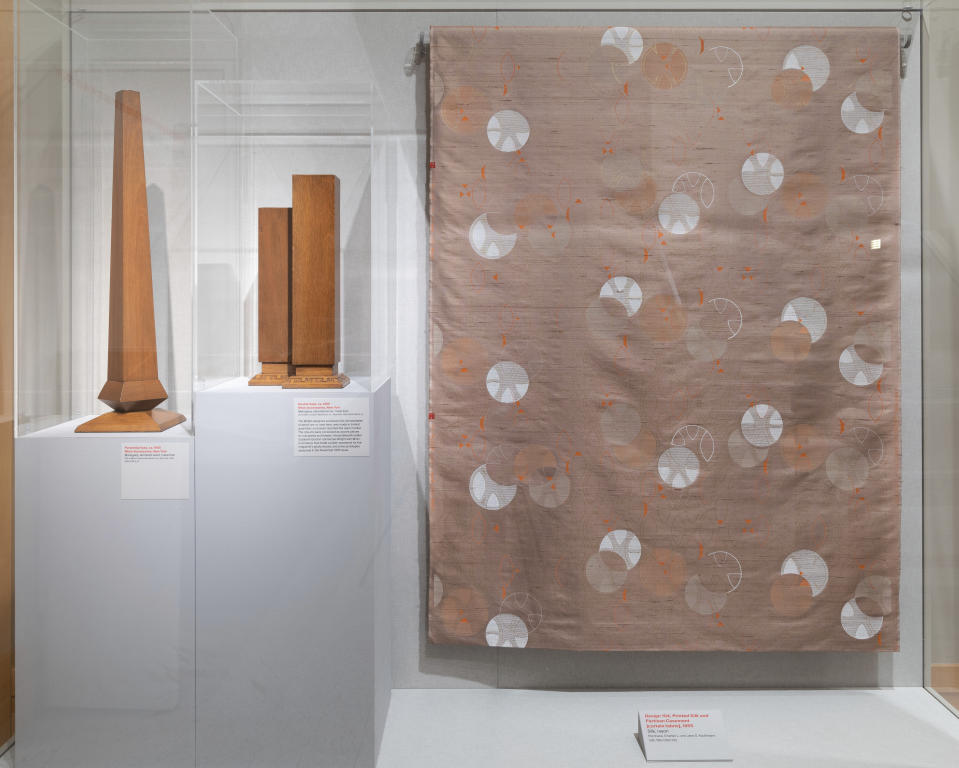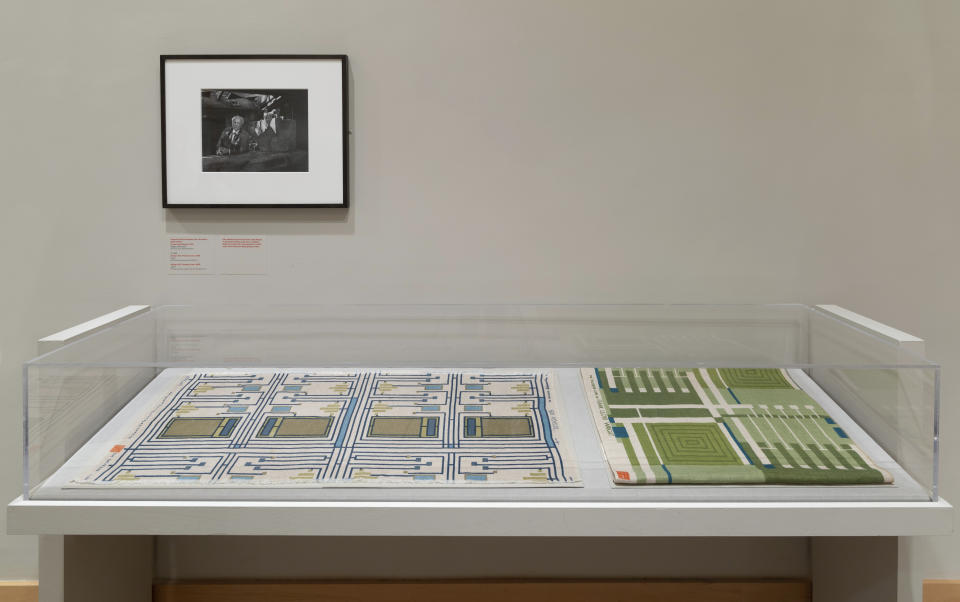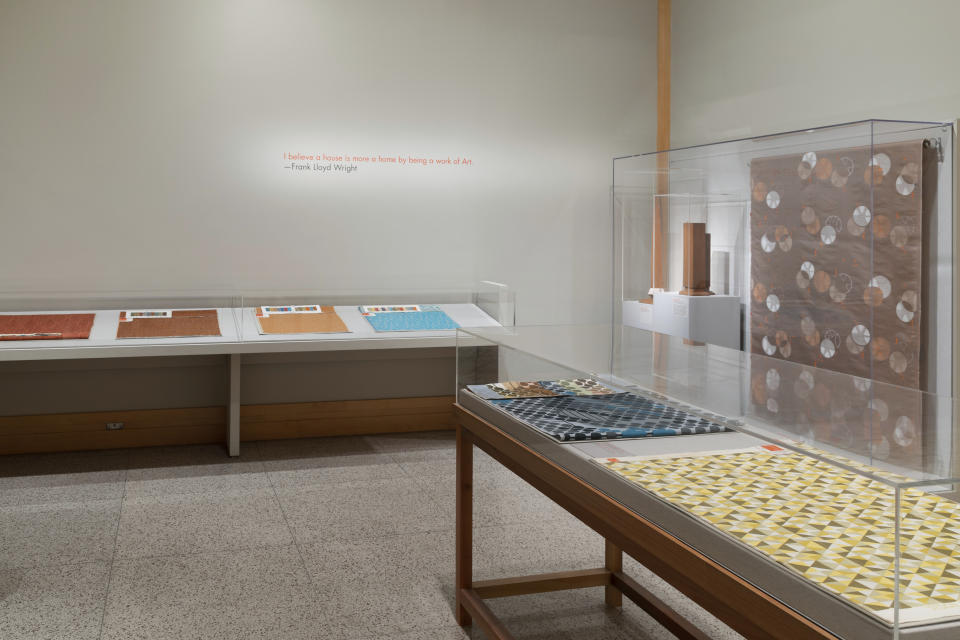A new look at Frank Lloyd Wright's textiles, home goods
NEW YORK (AP) — A small but important exhibit at the Metropolitan Museum of Art explores a little-known facet of architect Frank Lloyd Wright's creations: his line of wallpapers, printed and woven textiles, and other home goods designed for the public.
"Frank Lloyd Wright Textiles: The Taliesin Line, 1955-60" remains on view through Apr. 5, 2020. It reveals how, in 1954, Wright entered into his first commercial venture, designing a line of affordable home products aimed at the average consumer. The designs were based on Wright's architectural designs and inspired by his buildings.
The line was named Taliesin, after his homes and studios in Wisconsin and Arizona, and was available only through authorized dealers.
Wright entered into the venture at the urging of his friend Elizabeth Gordon, editor of House Beautiful magazine.
"The intention was that this was a way for his aesthetic to reach a much larger audience," says Amelia Peck, curator of decorative arts in the Met's American Wing, and supervising curator of the Antonia Ratti Textile Center there.
In addition to designing affordable wallpapers and textiles for F. Schumacher and Co., Wright agreed to design furniture (for Heritage-Hendredon), paints (Martin-Senour), rugs (Karastan) and home accent pieces, made by Minic Accessories.
"Wright didn't trust interior decorators. He called them 'inferior desecrators,'" says Peck, adding that another goal of the Wright-approved wallpapers and textiles for upholstery and drapery was to help people get his aesthetic right.
To publicize the Taliesin Line of products, the November 1955 issue of House Beautiful was devoted to Wright's work, presenting the entire collection. Ultimately, though, only the textiles, wallpaper, paint and furniture were produced.
While Wright's paints and furniture did not meet with much success, the wallpapers and textiles did. Many remained in production for a decade, with some updated versions rereleased in 1986 and again as recently as 2017.
The exhibit features an enormous original sample book, one of only 100 copies of "Schumacher's Taliesin Line of Decorative Fabrics and Wallpapers Designed by Frank Lloyd Wright" (1955). The works were a collaboration between Wright, his apprentices and Schumacher, but Wright had final approval, Peck says.
The exhibit also features examples of some of Wright's wallpapers, and printed and woven fabrics.
While the Japanese influence evident in many of the pieces is no surprise, given Wright's travels to Asia and the way he incorporated Asian elements in his architectural designs, some of the colors will come as a surprise. Far from the muted neutrals popular today, many of the hues are vivid, such as dazzling shades of turquoise. Even more surprising, some of the woven upholstery fabrics are interwoven with Lurex, adding a less than understated bit of sparkle.
"You don't think of Wright as a sparkly sort of guy, but he approved it," she says.
Other fabrics are surprisingly forward-looking. Although designed in the late '50s, some of Wright's patterns seem more reminiscent of the '60s, featuring bright curvy patterns in dazzling colors.
The installation also features two Minic vases (which Wright referred to as "weed holders") in mahogany with metal lining.
Some of the textiles are still available from Schumacher, which released anniversary editions of some, although the colors now available tend to be more muted, Peck says.
All of the pages of the Taliesin Line sample book have been newly photographed and can be viewed on the museum's website, along with all 29 pieces of Wright fabric that are in the Met's collection.
To put the textiles in context, visitors are encouraged to combine a visit to the textile installation with a visit to a separate installation of Wright's architectural drawings, "Frank Lloyd Wright: Designs for Francis and Mary Little," on view through Nov. 12. It features drawings and letters exploring Wright's working relationship with the Littles, for whom he built a house in Peoria, Illinois, and another in Lake Minnetonka, Minnesota.
The museum also features "Living Room from Francis W. Little House, 1912-14," a permanent installation that was originally the living room of the Littles' summer home in a suburb of Minneapolis. The room reveals the extent to which Wright's architecture and decor are interconnected.
